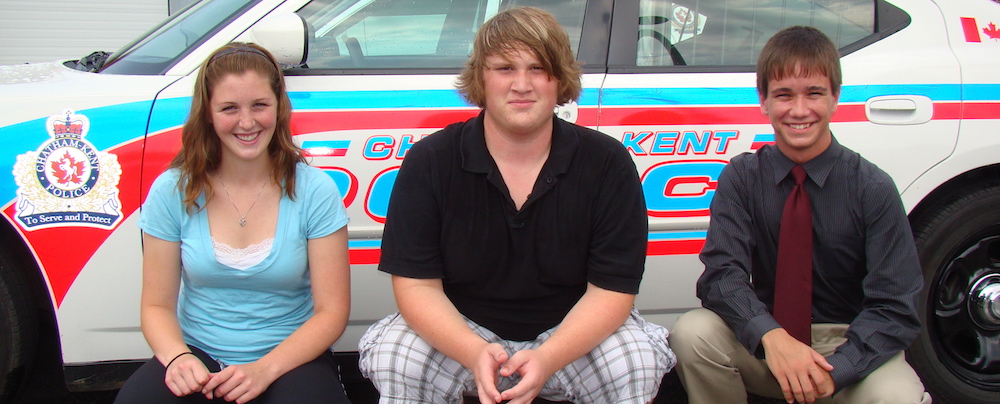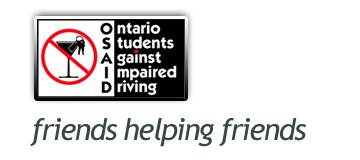New Drivers
So it’s time to get your license! As if your parents weren’t turning gray fast enough, now you want to learn to drive a car. Well, if you’re 16, you’re old enough to get a G1 license, which allows you to drive with an experienced and licensed driver in the car with you. This involves writing a test. If you take a driver’s training course, you are eligible to get your license eight (8) months after the day you earn your G1. If you choose not to take driver’s education, you must wait 12 months.
Here’s what you’ll be tested on:
- Identifing and demonstrating some of the driving controls inside the vehicle,
- operating a vehicle with reasonable skill and control,
- Using proper signals,
- Conducting correct left and right turns,
- Selecting proper traffic lanes,
- Driving in reverse,
- Allowing right of way to pedestrians and other motorists,
- Controlling and maintaining your speed,
- Parallel parking and parking on hills,
- Obeying traffic control devices,
- Demonstrating good driving practices,
- Observing the rules of the road.
If you can’t control the vehicle, don’t obey traffic laws or if you make too many errors that require correction, you’ll probably flunk. Make sure you’ve practiced enough to feel confident before you take the test.
- While driving at a slow speed, as in a school zone, make a note of when the vehicle in front of you passes a fixed point, such as a sign post or tree.
- If you pass the same point before you can say “one thousand one, one thousand two” you’re driving too close.
- The faster you drive, the more distance you must place between you and the driver in front of you.
- Adjust your driving in poor conditions such as fog, snow and heavy rain.
When you stop behind another car make sure you can see its back wheels touching the road.
Did you know . . . ?
- If you arrive at a four-way stop at the same time as another driver, you must yield to the car to your right.
- You have to yield to cyclists and pedestrians when you make a turn.
- Yellow doesn’t mean “floor it!” Stop at a yellow light unless it’s unsafe to stop.
- Failing to stop for red lights is illegal!
Road Rage
Whether you are the culprit or another driver is, road rage is often avoidable. Here are a few tips:
- Being considerate helps to reduce other drivers’ frustration.
- Getting back at a driver who cuts you off, or getting angry, usually causes the situation to get worse and can cause collisions. Keep your cool, even with obnoxious drivers.
- If you’re getting angry, take a deep breath and relax. Getting upset won’t help.
- Tailgating can make other drivers mad.
- Insulting hand gestures can make other drivers mad
- If another driver is acting aggressively, slow down and put some distance between you and the other car. If you think a driver is following you or is trying to start a fight, call the police on your cell phone if you have one. Or, drive to a place with a lot of people around such as a convenience store, mall or even a hospital. Don’t get out of your car. Don’t go home.
- Be on the look-out for things you don’t expect such as pedestrians who don’t see you coming and other drivers who change lanes unexpectedly.
- When the light turns green, check the intersection before you go to see if someone is failing to stop at a red light (check left, then right, then left again).
- If you’re about to enter a school zone, reduce your speed to 30 km and keep your eyes open for small children crossing the road or running into traffic.
Protect Yourself in your Car
Try to drive cars that are in good working condition, and make sure you have enough gas to get where you’re going. But if you do break down, here are a few tips:
Breakdowns
- Turn on your four-way flashers immediately to warn drivers behind you.
- Use emergency flares to warn other drivers you have stopped.
- Coast off to the side of the road so you won’t get hit by following traffic, even if you have to drive on a flat tire.
- If you have a cell phone, great! If not, look for a pay phone or roadside emergency phone. Keep some loose change or a phone card in your car for emergencies.
- If someone stops to help, stay in your car and ask him or her to go and get help. It’s a bad idea to go with a stranger no matter how old you are or whether you’re a guy or girl.
- Know where you are and where you’re going – keep a map in your car.
- Keep your car doors locked.
- Roll your windows up enough so people can’t reach in when you’re stopped.
- Keep valuables on the floor or out of sight, not on the seat.
- When you’re going to your car, especially at night, have your keys ready and keep your eyes open for suspicious people hanging around.
- Look inside the car before getting in.
- f you think you’re being followed, drive to an open gas station, convenience store, or any place where there are a lot of people. Call the police and try and remember as many details about the incident and the other car as you can. Another option is to attract attention with your horn and by flashing your lights. Whatever you do, don’t drive home!
- Hiding spare keys is risky – criminals can imagine most hiding places you can.
- Keep documents that identify your address on you, not in your car, if possible.
- Park in well-lit areas close to the mall or buildings – avoid deserted areas in parking lots.
- Lock your doors and close your windows.
- Don’t leave valuables or change out in plain sight.


 OSAID is a registered charity in Ontario that began operating in the 1980s. Today this organization reaches more than 300,000 students annually. Just within the past decade OSAID has graduated over 20,000 youth leaders who are now living, working, and driving in every community throughout Ontario.
OSAID is a registered charity in Ontario that began operating in the 1980s. Today this organization reaches more than 300,000 students annually. Just within the past decade OSAID has graduated over 20,000 youth leaders who are now living, working, and driving in every community throughout Ontario.

